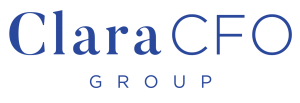
What is Cash Flow, really?
Cash flow, defined as the net amount of cash being transferred in and out of a company, can vary throughout the year for many businesses. This may be due to economic factors, the seasonality of the business, or periods of heavy investment. Despite the ups and downs, positive cash flow is critical to keep a business running by paying its employees, vendors and ultimately being able to generate revenue. Without cash, there is no business! We’ve accumulated some short-term and long-term strategies to improve or optimize cash flow for your business.
Short-term Strategies to Optimize Cash flow
- Have access to revolving credit for periods when cash is tight. Short-term borrowing is an important tool for all businesses. This may look like a business credit card or a line of credit and can be really helpful to tide you over on an infrequent basis. See below for more info on the difference between a business line of credit and a loan.
- Sell more to your existing customers. The easiest customer is one that you already have! Hannah knew a business owner who created a new high-ticket offer and sold it to three people who were already working with her in other ways! It resulted in an extra $30,000 in cash flow in a few days.
- Invoice your customers timely and follow-up quickly when their payments are past due.
- Institute a late payment policy and charge a late fee to incentivize on-time payments.
- Institute a discount for early payment (i.e. 2% discount to pay in 10 days rather than net 30) or even offer annual payment discounts if your customers normally pay monthly.
- Reach out to vendors to negotiate terms on their invoices. Typical terms are 30-60 days from the invoice date. If your vendors already offer terms, use the full length of the term and hold onto cash as long as possible.
- Shift expenses to a credit card, where possible. If you aren’t penalized for using a credit card, most of your operating expenses can be put onto a credit card, which gives you an extra 30-45 days to pay.
- Review your expenses, and cut unnecessary spending. (We often see waste in subscriptions or web-based software tools)
- Estimate your quarterly estimated tax payments and do not overpay the IRS based on tax coupons.
Long-term Strategies to Optimize Cash Flow
- Consistently focus on business development and your sales pipeline. Taking a break from business development is often felt months later when sales start to slow. This area of the business should be something you pay attention to constantly to ensure sales are stable over the entire year.
- Review the interest rates on all of your outstanding debt and pay down debt with the highest interest rate first. This strategy can save you a lot of interest expense. Also consider refinancing your debt or doing a balance transfer on credit cards if interest rates are very high.
- Raise your prices regularly. It’s important to look at prices at least once a year. How do your prices compare to competitors and the overall market? Are they keeping up with rising costs of doing business? Consider the impact to existing customers and potentially phase them into the new prices over time.
- Stick to your budget. Create a detailed expense plan together and it’s important to spend within those limits. When unforeseen expenses do come up, understand the impact on cash flow, explore trade-offs and look for ways to find savings in other areas.
What is the difference between a line of credit and a loan?

A line of credit (LOC) is a must-have for businesses operating in today’s dynamic economy. It is a preset borrowing limit from a bank that can be used at any time, paid back, and borrowed again. Funds can be used for any purpose, and it’s best to pay back any amount borrowed within a short period (under 1 year). LOCs tend to have higher interest rates than loans, but lower rates than credit cards. Interest only accrues when funds are accessed.
Loans differ because the borrower has access to the total amount loaned only once in a big lump sum and then the amount is repaid over time with a strict repayment schedule. Each payment is split between interest and principal (the amount actually paying off the loan balance). We see businesses use loans most often for a specific need, such as an equipment purchase or for business expansion. The payoff periods can be much longer with loans, so they can be more useful if you believe the return on your investment will be more than 1 year.
We recommend that all of our clients have access to a line of credit even if cash in the bank is at a healthy level. If you currently don’t have a LOC, the best place to start is with the bank that you have your business checking and savings accounts with. They know you best and will be most likely to extend you credit.
Make sure you do your due diligence and understand the terms of any debt facility before you sign paperwork. Always use reputable banks and lending agencies for your financing needs.






